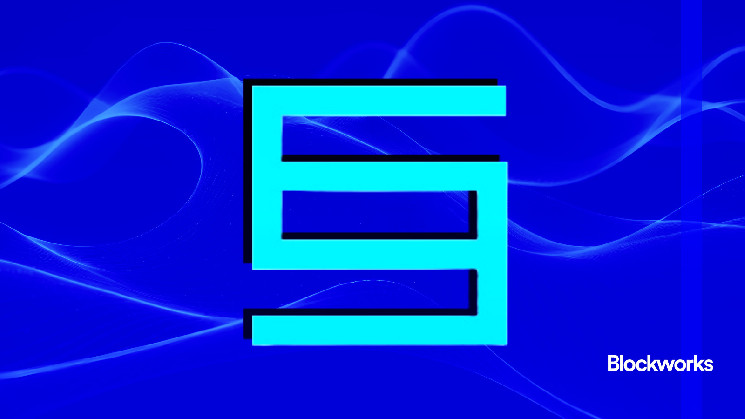Restaking pioneer EigenLayer has demonstrated remarkable success in attracting capital — effectively acting as a “black hole” for ether — and has become one of the largest DeFi protocols in the process.
But Symbiotic’s entrance into the shared security space with a “stake anything” design is poised to shake things up.
Since launching on Ethereum mainnet just over a year ago, EigenLayer had sucked in about 5.4 million ETH, worth $20 billion at its peak in early June. The protocol began raising deposit caps aggressively in early 2024, and accepting more flavors of ether.
By March, deposits had increased from under 1 million ETH to approximately 3 million. This growth rate continued even after the launch of Karak, an alternative multi-asset restaking model designed to enhance staking yields.
Read more: Karak wants to introduce ‘universal restaking’ for everyone
Taking the concept further, newcomer Symbiotic supports any ERC-20 asset as collateral for restaking. This level of customization options, and a flexible restaking model, enables developers to use a wide variety of assets to secure their applications.
Ethena’s native token ENA, along with the staked version of its synthetic dollar, sUSDe, which earns yield through ether staking and the futures basis trade, yesterday became the first non-ETH-based assets to be restaked on Symbiotic.
The new sUSDe vault on Mellow Finance, which provides infrastructure to Symbiotic risk curators, rapidly hit its $40 million cap, and the ENA vault is about half full after the first day of deposits.
Both Mellow and Symbiotic were supported by Cyber Fund and are part of the Lido Alliance, and other Mellow vaults only accept Lido staked ether (stETH), for now.
The Ethena vaults have three curators: MEV Capital, Re7 Labs and K3. Laurent Bourquin, a general partner at MEV Capital, says he expects liquid restaking tokens (LRTs) to be accepted as deposits in Symbiotic vaults as well.
“The main big difference is the [agnosticism] of Symbiotic in the sense that you can also let EigenLayer LRTs to come to Symbiotic,” Bourquin told Blockworks, “so you will have double slashing, hence a double yield tranche.”
Other liquid staking and restaking providers are eager to jump in the pool too, agrees Sunand Raghupathi, co-founder of both Veda Protocol and Seven Seas Capital, though not necessarily as Bourquin sees it.
“Two days after Symbiotic announced their launch — and, behind the scenes, they were clearly working with Mellow to build restaking infrastructure — through Veda we were actually able to launch a LRT on Symbiotic,” Raghupathi told Blockworks.
Read more: Symbiotic aims to be the Uniswap of shared security
Veda partnered with EtherFi on its “Super Symbiotic” vault, which accepts a variety of ether derivatives — including EtherFi’s eETH — and converts them to stETH for use in Symbiotic.
Technically, Symbiotic could accept eETH itself, which would effectively be double-restaked — first in EigenLayer and then in Symbiotic — but that’s not what EtherFi does. If a user supplies eETH, it is first removed from EigenLayer.
As Misha Putiatin, co-founder of Symbiotic has noted, double restaking would be inherently risky.
“We can’t stop people from double restaking, if networks accept that, we can’t do anything about that,” Putiatin said, adding they have no plans to incentivize such behavior, however.
MEV Capital’s Bourquin thinks double restaking is inevitable.
“I think now it’s first of all FOMO — fear of missing out — from the LRTs to still being there first,” Bourquin said. “So let’s say the risk is put a bit aside for now for the simple reason that slashing doesn’t even exist yet on EigenLayer — we are talking about risk that will be there at the end of the summer.”
Although EigenLayer accepts deposits which can be delegated to Actively Validated Services (AVSes), none of these are yet live with slashing conditions in place, which will eventually put depositors’ capital at greater risk.
Ultimately, Bourquin sees the flexibility of Symbiotic as a clear plus.
“We are really bullish on Symbiotic because it avoids the hyper-centralization of LRTs into one or two or three names,” Bourquin said.
EtherFi started as an EigenLayer restaking protocol but has branched out to become a trusted brand in other areas — for instance, launching Liquid, a stablecoin vault which is managed by Seven Seas and earns high yields through myriad DeFi avenues such as liquidity provisioning, lending optimization and peg arbitrage.
By allowing its users to participate in Symbiotic, EtherFi can retain them within its ecosystem, capturing a portion of the capital flows. This approach provides an alternative to swapping out of eETH via on-chain liquidity pools, which could otherwise pressure the derivative’s stability.
Read more: What was behind the run on Renzo’s liquid restaked ETH?
Even if the amount of eETH declines as a result, EtherFi retains those users through its brand and frontend, the argument goes.
“The EigenLayer view is that most assets should not be used for this,” Raghupathi said. “We’ve spent a long time discovering that ETH is in some sense the king of secure assets.”
Symbiotic’s view is market forces should determine what is or isn’t suitable collateral for AVS staking.
EigenLayer does have plans of supporting dual staking, using ETH and a bespoke cryptoasset together, but Symbiotic’s permissionless design enables that today, Raghupathi said.
“Anyone can spin up markets on Symbiotic, and so you’re going to see a much larger diversity of tokens that are being used to secure AVSes on Symbiotic than you see in EigenLayer which is very, very ETH focused.”
Sourced from cryptonews.net.








